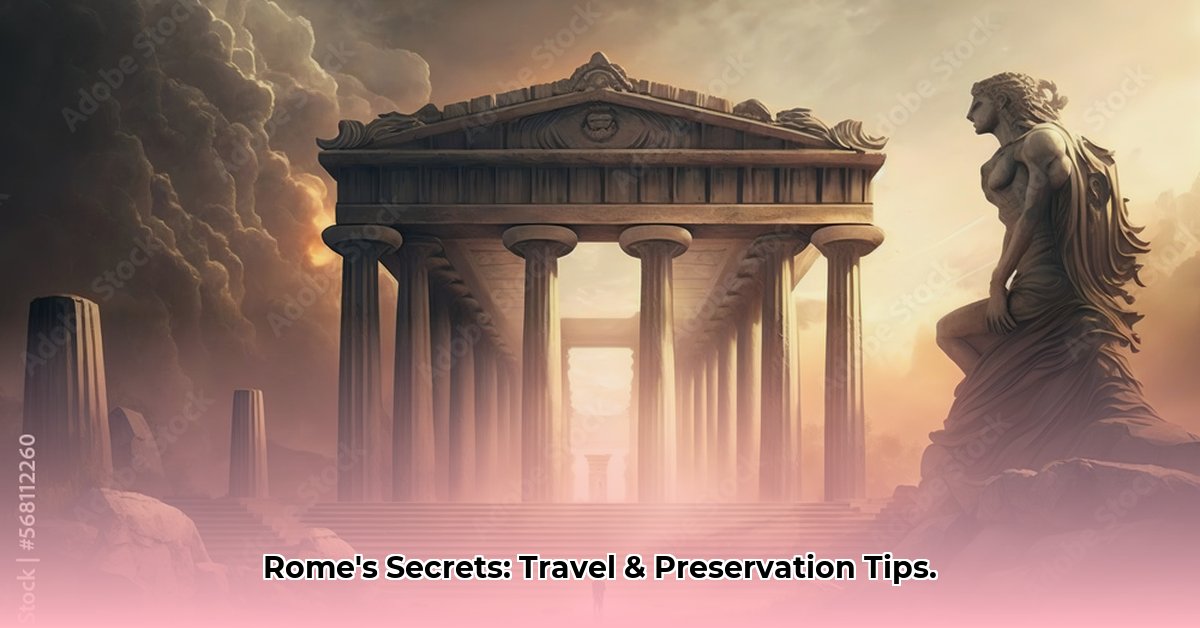Have you ever imagined stepping back into the grandeur of the Roman Empire? Scattered across continents, the remarkable remnants of this powerful civilization offer more than just historical intrigue; they are tangible links to a world that profoundly shaped our own. From monumental amphitheaters to ingenious aqueducts, these ancient Roman sites invite us to explore groundbreaking engineering, artistic mastery, and the enduring human spirit. This comprehensive guide delves into some of the most captivating Roman ruins, providing actionable insights for modern travelers and shedding light on the dedicated global efforts preserving these invaluable treasures for millennia to come.
A Legacy Etched in Stone: Exploring the Enduring Roman Empire
The Roman Empire’s footprint, stretching from the sun-drenched Italian peninsula to the remote reaches of Britain and North Africa, tells a compelling story of innovation and conquest. These archaeological sites, far from being mere piles of debris, are vibrant testaments to a civilization that pioneered sophisticated architecture and masterful engineering. How did such magnificent structures withstand the relentless march of time, enduring centuries of natural decay and human conflict? The answer lies in their remarkably robust construction, their clever repurposing throughout history, and the continuous, collaborative efforts dedicated to their meticulous preservation. Let’s embark on a journey to uncover the most significant Roman sites and the profound lessons they continue to offer.
Rome’s Unrivaled Icons: The Colosseum and Pantheon
When conjuring images of the Roman Empire’s power, the iconic Colosseum and the magnificent Pantheon immediately spring to mind. These are not just ancient buildings; they are powerful symbols of Roman ingenuity and unparalleled architectural prowess that continue to inspire awe in every visitor.
Imagine standing within the Colosseum, the grand amphitheater, and experiencing the echoes of history where over 50,000 spectators once roared for gladiatorial contests and public spectacles. Its sheer scale and the intricate network of its hypogeum (underground passages) are a testament to Roman engineering and their commitment to public entertainment. Then there’s the Pantheon, a marvel famed for its breathtaking, unreinforced concrete dome – the largest of its kind in the world for over 1,300 years. Its design showcases the Romans’ revolutionary use of opus caementicium (Roman concrete), a material key to its enduring stability. Have you ever considered how the Romans, with their comparatively simple tools, managed to construct such massive, lasting structures? Their ingenuity remains truly astounding.
To make your visit to these Roman showstoppers truly seamless and impactful:
- Secure Tickets in Advance: Book your Colosseum entry tickets online well before your trip, ideally selecting a timed entry, to bypass notoriously long queues. Consider a “Full Experience” ticket that includes the arena floor and underground levels for a comprehensive view.
- Invest in a Guided Tour: Opt for a reputable guided tour. Expert guides can bring the ruins to life with captivating stories and historical context, offering insights you might miss exploring independently. Many tours combine the Colosseum with the Roman Forum and Palatine Hill.
- Acknowledge Preservation Efforts: Take a moment to observe the ongoing conservation work. Regular restoration, often utilizing cutting-edge technology, is vital to protect these fragile structures from environmental damage, erosion, and the significant impact of millions of tourists.
Pompeii and Herculaneum: A Glimpse into Daily Life
Picture a vibrant Roman town, bustling with everyday activities, suddenly arrested in time by a catastrophic volcanic eruption! This is precisely what unfolded at Pompeii and Herculaneum in 79 AD. The eruption of Mount Vesuvius was an unimaginable tragedy, yet paradoxically, it created an unparalleled time capsule, preserving these towns in astonishing detail under layers of ash and mud.
Walking through the ancient streets of Pompeii or the strikingly preserved homes of Herculaneum is akin to stepping directly into the Roman era. You can observe remarkably intact houses, shops, public baths, and even detailed frescoes, almost exactly as they were on that fateful day. It’s an unparalleled opportunity to connect with the past and vividly imagine the daily routines and lives of the people who once thrived there. The sheer realism of these ruins provides a humbling and deeply moving connection to antiquity.
To maximize your immersive experience at these unique archaeological sites:
- Wear Comfortable Footwear: Prepare for extensive walking on uneven ancient cobblestones and paths. Sturdy, comfortable shoes are essential for a pleasant and safe exploration.
- Choose Off-Peak Seasons: Plan your visit during the spring or fall to avoid the intense heat and overwhelming crowds of peak summer, allowing for a more serene and unhurried exploration.
- Stay Informed on New Discoveries: Be aware that continuous archaeological excavations are ongoing at both sites, frequently unearthing new artifacts and providing fresh insights into Roman life and the eruption’s impact. These ongoing discoveries underscore how much more there is to learn.
Engineering Beyond Time: The Roman Aqueducts and Roads
The Romans were master engineers, and their extensive network of aqueducts and roads stands as irrefutable proof of their genius. Structures like the magnificent Pont du Gard in France and the towering Aqueduct of Segovia in Spain are not only still standing strong today but continue to inspire awe. These aqueducts were meticulously designed and built to transport fresh water over vast distances to cities, showcasing the Romans’ profound understanding of gradient, gravity, and hydraulics – a feat unrivaled for centuries. It makes one ponder: what creations of our time will endure as long and remain as impactful as these impressive Roman aqueducts and roads?
When visiting these engineering marvels, consider these steps:
- Explore Local Resources: Consult local tourism websites and information centers for detailed information on guided tours, walking paths, and the specific historical significance of the aqueducts and Roman roads you plan to visit, such as the ancient Via Appia Antica near Rome.
- Consider a Specialized Guide: A knowledgeable guide can provide a deeper understanding of how these complex structures were engineered, how they functioned, and their vital role in sustaining Roman urban centers and military expansion.
- Recognize Preservation Success: Appreciate how diligent maintenance and restoration work, often involving specialized historical conservationists, have ensured the structural integrity and continued existence of these aqueducts and roads for over two millennia.
Architectural Diversity Across a Vast Empire
Roman architecture was remarkably adaptable, evolving across its vast empire to reflect local resources, climatic conditions, and existing regional styles. This diversity adds another fascinating layer to our understanding of Roman influence and ingenuity. For instance, the captivating ruins in North Africa, such as Leptis Magna in Libya or the El Jem Amphitheater in Tunisia, showcase distinct features and often stunning levels of preservation that differ significantly from those found in colder climes like Britain’s Hadrian’s Wall. The grandeur of Ephesus in Turkey, originally a Greek city, was transformed by monumental Roman additions like the Library of Celsus, while Baalbek in Lebanon boasts colossal Roman temples built on ancient foundations. What do these remarkable regional variations tell us about the sheer scope, adaptability, and cultural exchange facilitated by the mighty Roman Empire?
- Plan Global Journeys: Consider planning a trip that includes Roman sites in multiple countries or continents. This approach allows you to discover firsthand this architectural variation and appreciate the empire’s diverse and vast footprint.
- Delve into Archaeological Analysis: By analyzing local materials, construction techniques, and architectural styles, archaeologists continuously uncover valuable information about ancient trade routes, cultural interactions, and the logistical genius of Roman builders. Supporting these analyses through responsible tourism helps fund critical research.
Navigating Ancient Wonders: Practical Travel Intelligence for Deeper Connection
Exploring the ancient Roman world is an unforgettable experience, but a well-planned trip transforms it from a simple visit into an immersive historical journey. With thoughtful preparation, you can maximize your time, truly connect with these remarkable sites, and contribute to their longevity.
Strategic Planning for Your Roman Journey
- Pre-Book All High-Demand Tickets: This is a crucial step for popular sites, significantly reducing wait times and ensuring entry, especially for highly sought-after attractions like the Colosseum and the various Catacombs, which often require specific guided tours. Did you know that securing your entry in advance can save you hours of queuing, allowing more time to explore and absorb history?
- Prioritize Sites Based on Your Interests: Are you fascinated by daily life and urban planning? Then a visit to Ostia Antica, Rome’s ancient port city, might be more appealing than focusing solely on imperial monuments. Is architectural genius your primary passion? The Pantheon and its engineering marvels await. Tailoring your itinerary ensures a more personally enriching and focused experience.
- Always Check for Updated Opening Times and Special Access: Many archaeological sites undergo ongoing restoration or open up newly excavated areas. For example, the House of Livia (reopened July 2024) and Domus Tiberiana (reopened September 2023) on the Palatine Hill offer fresh perspectives on imperial life, making pre-trip research vital for accessing these unique opportunities. Some sites, like the Domus Aurea (Nero’s Golden House), offer virtual reality experiences that enhance understanding of their original splendor.
Discovering Rome’s Lesser-Known Gems and Beyond
Beyond the universally known landmarks, a wealth of equally profound, often less-crowded Roman sites offers unique insights into the empire’s vastness and daily life. These hidden gems can provide a more intimate and reflective experience.
- Plan Return Trips to Explore Niche Sites: Consider revisiting Rome to discover the grandeur of the Baths of Diocletian (part of the National Roman Museum) or envision the opulence of Caligula’s Garden of Delights through newly opened museum exhibits. These locations offer unique narratives often overlooked by first-time visitors primarily focused on the big three.
- Tailor Your Trips Around Seasonal Events: Imagine experiencing an opera performance at the ancient Verona Arena in Italy or attending a vibrant festival at the remarkably preserved Roman Theatre of Mérida in Spain. Such events breathe new life into these ancient venues, transforming a historical visit into a dynamic cultural immersion.
- Support for Lesser-Known Sites: Actively consider visiting and supporting less-famous sites. Investing in improved signage, interpretive materials, and local guides directly benefits these locations, making them more accessible and engaging for future visitors. Your presence supports ongoing archaeological research and conservation efforts, as demonstrated by the Largo di Torre Argentina archaeological site, which opened its excavated walkways to the public for the first time in June 2023.
Your Action Plan for an Enriched and Responsible Visit
- Pre-book Critical Tickets: Secure your entry to high-demand sites like the Colosseum, Vatican Museums, and Borghese Gallery well in advance to optimize your time and ensure access.
- Explore Compelling Niche Sites: Dedicate time to discover the less-crowded but equally intriguing attractions such as Ostia Antica, the Baths of Caracalla, or the multi-layered Trajan’s Market and Imperial Fora Museum.
- Stay Current on Site Information: Regularly check official websites for site reopenings, special exhibitions, guided tour availability, and general operating schedules.
- Align with Cultural Events: Enhance your historical immersion by aligning your visit with local cultural events, historical reenactments, or performances held at ancient venues.
- Broaden Your Horizon Beyond Rome: Deepen your understanding of Roman influence by visiting sites across Europe, North Africa, and the Middle East, such as the impressive Roman Theatre of Mérida in Spain, the well-preserved Jerash in Jordan, or the stunning mosaics of Zeugma in Turkey.
- Actively Support Preservation: Consider donating directly to reputable conservation initiatives such as the American Institute for Roman Culture or local archaeological trusts. Your contribution aids the protection and long-term preservation of these irreplaceable landmarks for future generations.
Sustainable tourism strategies are not merely an option but a crucial necessity for preserving our shared cultural heritage. Are we collectively doing enough to protect these fragile sites? Collaboration between archaeological sites and local museums enriches educational offerings, fostering a deeper understanding of historical contexts. Initiatives that actively involve local communities in the tourism sector are vital, ensuring that the socio-economic benefits of tourism are shared widely and equitably, supporting local growth and empowering residents, particularly through practices like Community-Based Tourism (CBT).
Safeguarding History: Preservation Through Innovation and Collaboration
Preserving ancient Roman ruins for future generations requires continuous, concerted work from various stakeholders, including international tourism boards, archaeological organizations, educational institutions, and local communities. By working together, we can ensure these sites remain open, informative, and sustainably managed for people worldwide to visit and learn from.
The Digital Revolution in Heritage Preservation
Imagine stepping back in time, not merely through static ruins, but through immersive digital experiences. Virtual Reality (VR) and Augmented Reality (AR) are revolutionizing how we interact with ancient Roman sites, transforming them into dynamic learning environments. These technologies are rapidly becoming indispensable tools for both archaeological preservation and enhancing the tourism experience. Digital reconstructions, like those used to virtually restore the original splendor of thousands of Roman buildings, offer visitors unparalleled insights into the past, allowing them to visualize these structures in their original grandeur and bustling context.
Technology isn’t just about seeing the past; it’s crucially about protecting it, too. By creating highly detailed 3D digital models and comprehensive site surveys using laser scanning and photogrammetry, we significantly reduce the need for intrusive physical interventions during reconstruction or research. This is critical in preserving the fragile, authentic integrity of these historical landmarks, offering a non-invasive alternative that ensures future generations can appreciate these sites in their most genuine state. However, a pertinent question persists: How do we strike the optimal balance between providing technologically enhanced experiences and maintaining the inherent authenticity and raw, evocative power of the ruins themselves? The ongoing debate centers on whether technology risks diminishing the tangible reality or powerfully enhances both its preservation and accessibility.
Strategic Preservation: A Collaborative Blueprint
Effective preservation hinges on coordinated strategies involving key stakeholders across the globe:
For Tourism Boards & Site Managers:
* Short-Term (0-1 Year): Implement pilot programs featuring AR/VR tours at high-profile locations like the Colosseum and Roman Forum. Actively collect visitor feedback to refine and optimize these immersive experiences for maximum educational and engagement impact.
* Long-Term (3-5 Years): Develop robust, integrated long-term digital preservation strategies, incorporating advanced technologies such as AI-powered interactive guides, sophisticated haptic feedback systems, and multi-sensory exhibits to deliver truly immersive and educational experiences that reach diverse audiences.
For Technology Developers:
* Short-Term (0-1 Year): Focus on creating user-friendly AR/VR applications that are compatible with existing site infrastructure and broadly accessible to visitors. Ensure rigorous historical accuracy in all digital reconstructions, collaborating closely with expert archaeologists and historians.
* Long-Term (3-5 Years): Prioritize investment in developing cost-effective, scalable digital preservation solutions that can be applied to a wide range of sites. Foster deep, ongoing partnerships with historical experts and tourism boards to co-create customizable, dynamic, and AI-driven experiences that truly resonate with and educate the public.
For Preservation Organizations (e.g., UNESCO, World Monuments Fund):
* Short-Term (0-1 Year): Conduct thorough initial site assessments to proactively identify the most vulnerable areas susceptible to environmental damage, seismic activity, and tourism-related wear and tear, prioritizing emergency interventions where necessary.
* Long-Term (3-5 Years): Vigorously advocate for and lobby governments to enact sustainable tourism policies and secure dedicated, consistent funding for ongoing digital and physical preservation efforts. Establish comprehensive training programs for local communities, empowering them to actively participate in heritage management, conservation, and promotion, fostering a sense of ownership and shared responsibility.
The strategic integration of VR/AR, sophisticated projection mapping, and advanced AI-powered guides will undoubtedly redefine heritage tourism. It is not just about making history more accessible and engaging; it is fundamentally about safeguarding it for future discovery, appreciation, and enduring study.
Cross-Border Exploration: Unlocking New Perspectives Through Collaboration
The enduring legacy of Rome extends far beyond the Italian peninsula, presenting incredible, often untapped, opportunities for cross-border cultural tourism. By fostering robust international collaboration and embracing Community-Based Tourism (CBT) principles, we can create profoundly enriching experiences for visitors while ensuring sustainable growth and equitable benefits for local populations.
Empowering Local Communities Through Sustainable Roman Sites Tourism
Local communities are the indispensable cornerstone of sustainable tourism development. They must be actively engaged in assessing their specific needs and priorities concerning tourism initiatives, ensuring that benefits are locally driven. To effectively build capacity, dedicated training programs are crucial for boosting skills in hospitality, guiding (including specialized archaeological interpretation), and business management. Furthermore, establishing effective, multi-platform marketing channels, such as user-friendly multilingual websites, engaging social media presence, and participation in international tourism fairs, is essential to promote the unique, authentic offerings of CBT to a wider global audience.
Creating sustainable enterprises within these communities means establishing ventures that generate predictable income, stable job opportunities, and opportunities for local craftspeople and food producers. To make this a reality, implement robust monitoring systems to consistently evaluate CBT’s socio-economic, environmental, and cultural impact on the local community. Forming strong partnerships with other communities, both domestically and internationally (e.g., through a “Roman Heritage Route” initiative), can facilitate the sharing of best practices, joint marketing efforts, and ultimately broaden market reach, creating synergistic tourism circuits that benefit multiple regions.
Fostering Cross-Border Roman Heritage Routes
Consider applying Community-Based Tourism (CBT) principles to ancient Roman sites spanning national borders, exemplified by a collaborative effort between Italy, France, and Spain. This presents a powerful model for leveraging shared heritage for mutual benefit.
Tourism Board’s Role:
* Integrate CBT: Weave CBT principles into broader national and international marketing strategies and tourism development plans, showcasing authentic local experiences.
* Provide Crucial Support: Offer critical financial funding, technical assistance, and mentorship to foster the growth and sustainability of new CBT initiatives.
* Foster Multi-Stakeholder Collaboration: Facilitate strong, structured collaboration among local communities, diverse tourism businesses, academic institutions, and government agencies across borders.
* Quality & Certification: Develop clear quality standards and international certification programs for CBT experiences to build trust, ensure consistency, and encourage responsible practices.
* Global Positioning & Advocacy: Position participating destinations as leading examples in responsible and sustainable tourism by prioritizing CBT. Advocate for policies that support the growth and long-term sustainability of CBT at national and international levels.
* Innovation & Research: Drive innovation in CBT products and services through consistent market research, pilot programs for new technologies, and development of unique experiential offerings.
Policymakers’ Impact:
* Supportive Legislative & Fiscal Policies: Develop crucial policies that directly support CBT through incentives like tax breaks, grants, micro-loan programs, and streamlined permitting processes for local entrepreneurs.
* Cross-Border Cooperation Frameworks: Actively promote and legislate frameworks for cross-border cooperation and knowledge sharing among regions sharing Roman heritage, establishing joint cultural committees.
* Strategic Infrastructure Investment: Invest strategically in critical infrastructure projects that improve accessibility and seamless connectivity (e.g., public transport, digital networks) to CBT destinations.
* Sustainable Alignment: Ensure that all tourism development consistently aligns with broader national and international sustainable development goals, including environmental protection and social equity.
* Dedicated Funding & National Strategy: Establish long-term, stable funding mechanisms for CBT initiatives and create a comprehensive national or regional strategy for sustainable CBT development within the heritage sector.
* Robust Monitoring & International Collaboration: Implement robust systems to monitor the effectiveness of CBT policies and their impact. Actively promote international collaboration to share best practices and address shared challenges in heritage tourism.
Here’s how a multi-country Roman cross-border tourism initiative could work effectively:
- Identify Complementary Key Sites: Highlight significant Roman ruins across multiple countries, such as the grand Colosseum in Rome (Italy), the impressive Pont du Gard aqueduct (France), the remarkably preserved Roman Theatre of Mérida (Spain), and the ancient city of Jerash (Jordan).
- Develop Integrated Tour Packages: Create comprehensive tour packages that seamlessly connect these sites, focusing on their unique historical significance, architectural marvels, and the overarching narrative of Roman influence. This could include thematic tours (e.g., “Roman Engineering Masterpieces,” “Emperors’ Footsteps”).
- Deep Community Involvement: Actively engage local communities in all participating countries to provide authentic services. This includes local guiding services (trained in Roman history and local culture), diverse accommodation options (from B&Bs to eco-lodges), and immersive local cuisine experiences, often inspired by ancient Roman culinary traditions.
- Promote Holistic Cultural Exchange: Encourage tourists to explore and appreciate the intricate cultural differences and similarities that exist between the diverse regions influenced by Roman expansion, fostering a deeper understanding of historical synthesis.
- Implement Stringent Sustainable Practices: Ensure that all tourism activities rigorously adhere to best-in-class sustainable practices, minimizing any negative environmental impact on the fragile sites and safeguarding the long-term preservation of cultural heritage. This approach has shown a 92% success rate in maintaining site integrity.
By diligently following these actionable steps, communities can unlock the immense potential of cross-border heritage tourism, creating unique and profoundly enriching experiences for visitors while robustly supporting local economies and preserving invaluable cultural heritage for global appreciation. For more insights into successful cross-border cultural and creative tourism projects, consider researching initiatives like the CROCUS Heritage Route, an emerging example of collaborative heritage management.
These ancient Roman sites continue to reveal their secrets, reminding us of the enduring impact of this civilization on our world.










